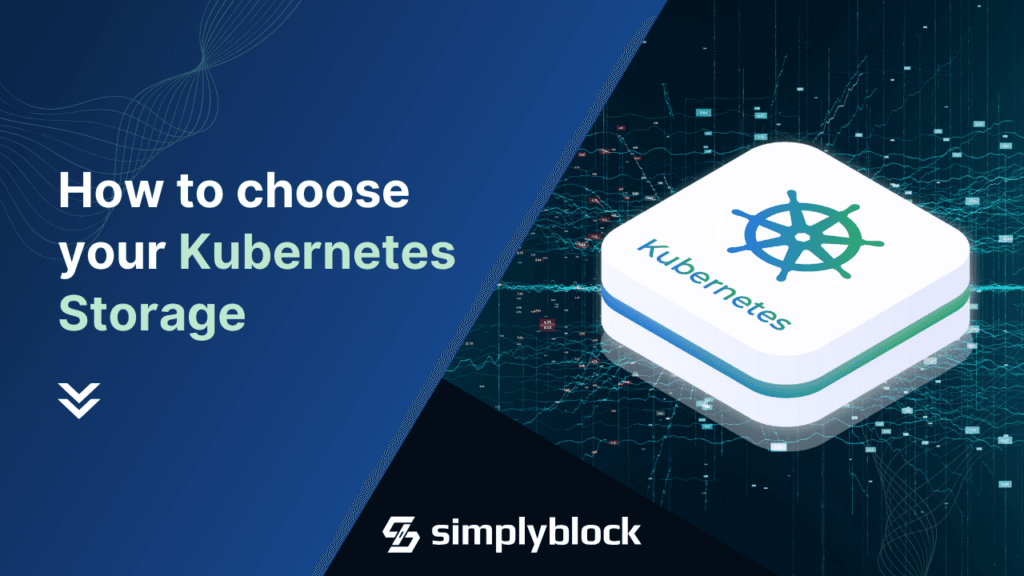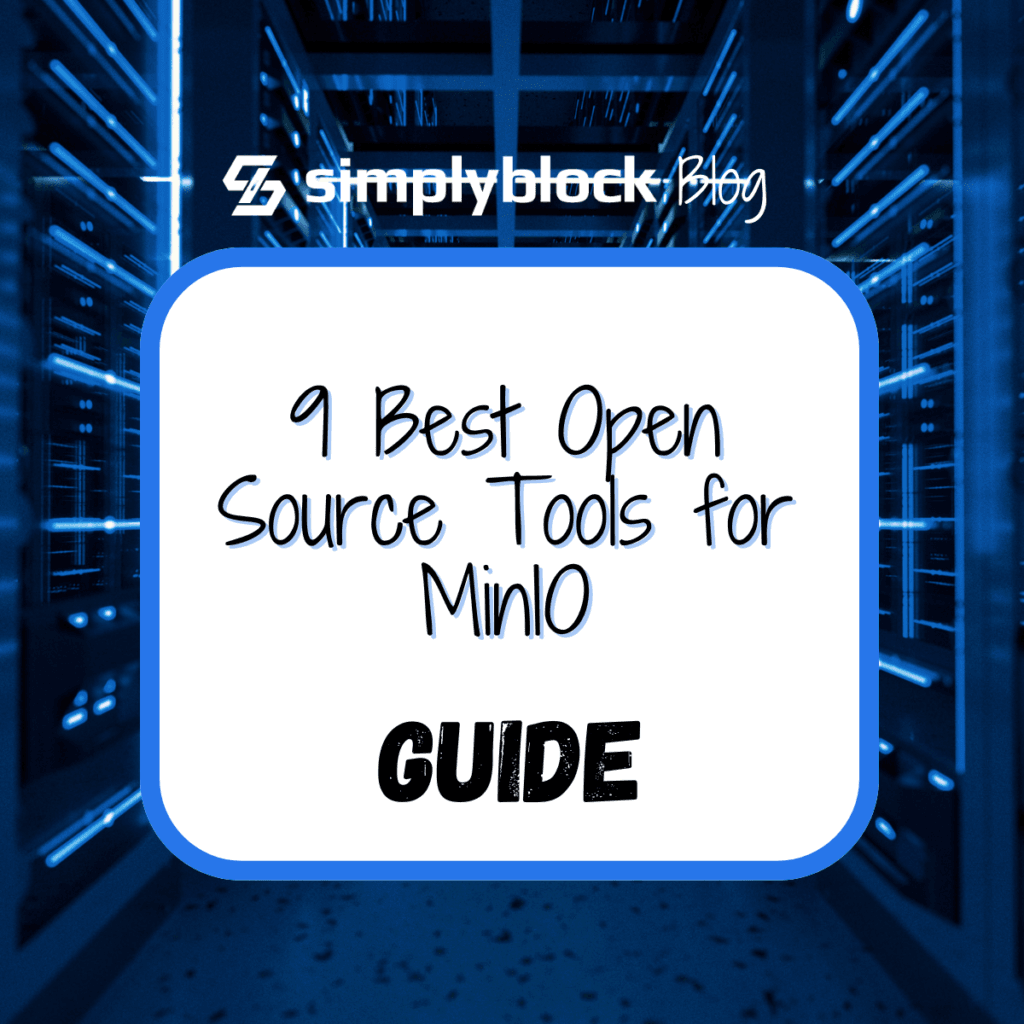Top 5 Open Source Software-Defined Storage (SDS) Tools for Enterprises
Feb 26th, 2025 | 5 min read

Table Of Contents
- 1. Ceph – Best for Scalable Unified Storage
- 2. Simplyblock – Best for Ultra-Low Latency Kubernetes Storage
- 3. OpenEBS – Best for Simple Kubernetes-Native Storage
- 4. Longhorn – Best for Lightweight Kubernetes Storage
- 5. MinIO – Best for S3-Compatible Object Storage
- Comparison Table: Quick Overview
- Final Thoughts & Call to Action
- Questions and Answers
📅 Updated for 2025 | Read Time: 6 min
Enterprises today generate and manage petabytes of data, with storage demands growing exponentially. Traditional hardware-based storage solutions lack flexibility, scalability, and cost efficiency, making Software-Defined Storage (SDS) the go-to solution for modern IT infrastructures.
As of 2024, the global SDS market is projected to reach $46 billion by 2027, fueled by:
✅ The rapid adoption of hybrid and multi-cloud architectures
✅ The need for high-performance storage for AI, ML, and databases
✅ Growing demand for open-source, vendor-neutral alternatives to proprietary storage
In this article, we explore the best open-source SDS tools to help enterprises achieve flexibility, high availability, and cost-effective storage scalability.
1. Ceph – Best for Scalable Unified Storage
📌 Use Case: Enterprise-scale distributed storage
🔹 Key Features: Unified block, object, and file storage
Ceph is a battle-tested, enterprise-grade SDS platform used for petabyte-scale storage in cloud and data center environments.
✅ Scales dynamically with self-balancing data placement
✅ Self-healing & fault tolerance ensure 99.9999% availability
✅ Multi-protocol support: Block (RBD), Object (S3), and File (CephFS)
🔹 Pros: Highly scalable, integrates with OpenStack & Kubernetes
🔹 Cons: Complex setup, high resource requirements
📌 Need a low-latency alternative? Check out Simplyblock (Tool 2).
2. Simplyblock – Best for Ultra-Low Latency Kubernetes Storage
📌 Use Case: High-performance, software-defined block storage for databases, AI workloads, and Kubernetes
🔹 Key Features: Low Latency, NVMe-over-TCP, SPDK-based, intelligent tiering to S3
Simplyblock is a next-generation open-standard SDS solution built for enterprises that require ultra-fast, low-latency storage for mission-critical applications. — including scale-out AI storage that demands high throughput and Kubernetes-native scalability. Unlike traditional SDS solutions, Simplyblock leverages SPDK (Storage Performance Development Kit) and NVMe-over-TCP, offering:
✅ Blazing-fast storage performance with NVMe-based block storage
✅ 10x lower latency than Ceph for high-speed database and AI workloads
✅ Automated tiering to S3 for cost-efficient storage management
✅ Optimized for Kubernetes, VMs, and cloud environments
🔹 Pros: High IOPS, ultra-low latency, reduces cloud storage costs
🔹 Cons: Requires NVMe-compatible hardware for full benefits
💡 Deploy Simplyblock in 10 minutes
3. OpenEBS – Best for Simple Kubernetes-Native Storage
📌 Use Case: Containerized workloads and DevOps environments
🔹 Key Features: Dynamic volume provisioning, cloud-native architecture
OpenEBS provides container-attached storage (CAS) for Kubernetes, offering:
- Dynamic storage provisioning within Kubernetes
- Multiple storage engines (Jiva, cStor, Mayastor)
- Replication and failover support
🔹 Pros: Ideal for DevOps, microservices, and Kubernetes workloads
🔹 Cons: Not designed for non-Kubernetes environments
📌 Alternative: If you need high-speed Kubernetes storage, Simplyblock provides SPDK-powered NVMe storage.
4. Longhorn – Best for Lightweight Kubernetes Storage
📌 Use Case: Simple distributed block storage for Kubernetes
🔹 Key Features: Built-in snapshots, backups, and high availability
Longhorn is an easy-to-deploy, lightweight alternative to Ceph and OpenEBS, perfect for small-to-medium containerized workloads.
🔹 Pros: Simple deployment, good for microservices
🔹 Cons: Not ideal for large-scale enterprise workloads
📌 Need enterprise-grade performance? Check out Simplyblock (Tool 2).
5. MinIO – Best for S3-Compatible Object Storage
📌 Use Case: High-performance, on-prem object storage
🔹 Key Features: S3 API compatibility, multi-cloud support
MinIO is a lightweight, high-speed object storage system, perfect for hybrid cloud and enterprise environments.
✅ S3-compatible API for seamless integration
✅ High-speed performance with scalable deployments
✅ Secure & compliant with end-to-end encryption
🔹 Pros: Best open-source object storage solution, highly scalable
🔹 Cons: Not a block storage alternative
📌 Need high-speed block storage instead? Simplyblock (Tool 2) offers NVMe-powered SDS.

More Open-Source SDS Solutions Worth Exploring
💡 If you’re looking for more specialized open-source SDS solutions, consider:
- 🔹 GlusterFS – Best for scale-out distributed file storage
- 🔹 DRBD – Best for real-time block-level replication
- 🔹 SeaweedFS – Best for high-speed object storage
- 🔹 LizardFS – Best for high-redundancy file storage
Comparison Table: Quick Overview
| SDS Tool | Best For | Type | Performance | Key Features |
|---|---|---|---|---|
| Ceph | Large-scale enterprise storage | Block/Object/File | High | Unified storage, self-healing |
| Simplyblock | Ultra-fast, low-latency storage | NVMe-based Block | Ultra-Fast 🚀 | SPDK, NVMe-over-TCP, S3 tiering |
| OpenEBS | Kubernetes-native workloads | Block | Medium | Container-attached storage |
| Longhorn | Lightweight Kubernetes storage | Block | Moderate | HA, snapshots, backups |
| MinIO | S3-compatible object storage | Object | Very Fast | Multi-cloud, secure |
Final Thoughts & Call to Action
The right Software-Defined Storage (SDS) solution depends on your workload:
✅ Need scalable object & file storage? → Go with Ceph
✅ Want ultra-low latency Kubernetes storage? → Simplyblock 🚀
✅ Looking for self-hosted S3 storage? → Try MinIO
👉 Deploy Simplyblock now and experience ultra-fast, cost-efficient SDS today! 🚀
Questions and Answers
Software-Defined Storage (SDS) is a technology that separates storage management from hardware, allowing greater flexibility and cost efficiency. Unlike traditional storage solutions, SDS enables automation, scalability, and seamless integration with various hardware. Learn more about software-defined storage.
Popular open-source SDS solutions include Ceph, which provides scalable distributed storage, OpenEBS for Kubernetes-native workloads, and MinIO for high-performance object storage. Simplyblock also offers an SDS solution optimized for NVMe over TCP.
Ceph is designed for large-scale, distributed environments but can be complex to manage. The Simplyblock vs Ceph comparison highlights how Simplyblock provides an SDS solution optimized for ultra-low latency and seamless integration with modern cloud-native infrastructures like Kubernetes.
Open-source SDS solutions provide flexibility, lower costs, and vendor independence. However, proprietary solutions may offer enterprise support, additional features, and easier deployment. The best choice depends on scalability needs, performance requirements, and technical expertise.
SDS allows organizations to scale storage resources dynamically by managing storage through software rather than being tied to specific hardware. This makes it easier to expand capacity, optimize performance, and integrate with cloud and containerized environments.



